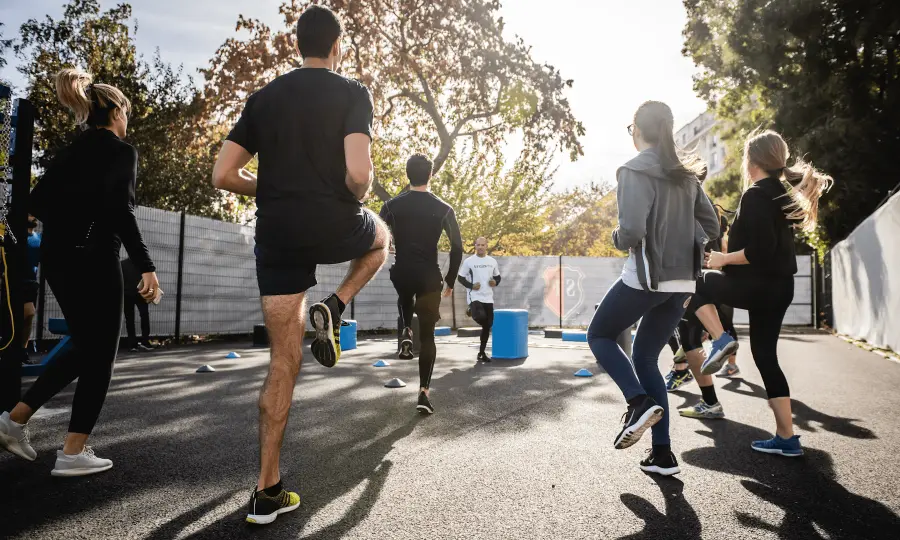Achieving the dual goals of losing weight and building muscle simultaneously can seem like a daunting task. Many people believe these objectives are mutually exclusive; that one must be sacrificed for the other. However, with the right approach, it’s possible to burn fat and gain muscle concurrently, leading to a leaner, stronger, and healthier body. In this comprehensive guide, we’ll delve into the science behind body recomposition, effective strategies for success, and practical tips to help you reach your fitness goals.
Understanding Body Recomposition
Body recomposition refers to the process of simultaneously losing fat and gaining muscle. Unlike traditional weight loss, where the focus is solely on reducing body fat, body recomposition emphasizes changing the body’s ratio of fat to lean mass. This approach is not only more sustainable but also leads to a more toned and defined physique.
The key to successful body recomposition lies in balancing three crucial elements: nutrition, exercise, and recovery. Let’s explore each of these components in detail.
Nutrition and Fueling Your Goals
Proper nutrition is the cornerstone of any fitness plan, especially when aiming to lose weight and build muscle simultaneously. Here are the essential nutritional principles to follow:
Caloric Intake and Macronutrient Balance
To achieve body recomposition, you need to manage your caloric intake carefully. Consuming too many calories will hinder fat loss, while consuming too few can impede muscle growth. The goal is to find a balance that supports muscle growth while promoting fat loss.
A good starting point is to calculate your Total Daily Energy Expenditure (TDEE), which represents the number of calories you need to maintain your current weight. From there, create a slight caloric deficit (typically 250-500 calories per day) to encourage fat loss while still providing enough energy for muscle growth.
Macronutrients – protein, carbohydrates, and fats – also play a crucial role. Aim for a macronutrient distribution that supports your goals:
Protein: Consume 1.0 to 1.2 grams of protein per pound of body weight daily to support muscle repair and growth.
Carbohydrates: Include complex carbohydrates to fuel your workouts and aid recovery. Around 40-50% of your total caloric intake should come from carbs.
Fats: Healthy fats are essential for hormone production and overall health. Aim for fats to make up about 20-30% of your total caloric intake.
Prioritize Protein Intake
Protein is the building block of muscle tissue. Ensuring you get enough protein is vital for muscle repair and growth, especially when in a caloric deficit. High-protein foods such as lean meats, fish, eggs, dairy products, legumes, and plant-based protein sources should be staples in your diet.
Consider incorporating protein shakes or bars to meet your daily protein requirements conveniently. Consuming protein-rich meals and snacks throughout the day can also help control hunger and support muscle protein synthesis.
Timing and Meal Frequency
Nutrient timing can impact your progress. While the concept of “anabolic windows” (specific times when nutrient intake is most effective) has been debated, consuming protein and carbohydrates around your workouts can enhance muscle recovery and growth.
Aim to eat a balanced meal containing protein, carbohydrates, and fats every 3-4 hours. This approach helps maintain energy levels, supports muscle protein synthesis, and prevents overeating.
Exercise and Building Muscle and Burning Fat
Effective training is the second pillar of body recomposition. A well-rounded exercise program that combines resistance training and cardiovascular exercise is essential.
Resistance Training
Resistance training (weightlifting) is the most effective way to build muscle. It stimulates muscle hypertrophy (growth) by creating micro-tears in muscle fibers, which then repair and grow stronger. Focus on compound movements that work multiple muscle groups simultaneously, such as:
Squats
Deadlifts
Bench Press
Rows
Pull-Ups
Overhead Press
Shoot for 3-4 resistance training sessions per week, targeting all major muscle groups. Vary your sets, reps, and weights to continually challenge your muscles and promote growth. Incorporate progressive overload, gradually increasing the weight or resistance over time, to ensure continual muscle adaptation.
Cardiovascular Exercise
Cardio is essential for burning calories and promoting fat loss. However, it’s crucial to balance cardio with resistance training to avoid muscle loss. Incorporate a mix of high-intensity interval training (HIIT) and steady-state cardio for optimal results.
HIIT: Short bursts of intense activity followed by periods of rest. HIIT sessions can be as short as 15-20 minutes but are highly effective for burning fat and preserving muscle.
Steady-State Cardio: Moderate-intensity exercise (e.g., jogging, cycling) performed for a longer duration. Aim for 2-3 sessions of 30-45 minutes per week.
Recovery, The Forgotten Element
Recovery is often overlooked but is just as important as nutrition and exercise. Adequate rest allows your muscles to repair and grow, reduces the risk of injury, and ensures you have the energy to perform at your best.
Sleep
Quality sleep is vital for muscle recovery and overall health. Do your best to acquire 7-9 hours of sleep per night. Establish a consistent sleep routine, create a restful environment, and avoid stimulants like caffeine before bedtime.
Active Recovery
Incorporate active recovery days into your routine. Activities like light walking, stretching, yoga, or foam rolling can help reduce muscle soreness and improve flexibility without adding additional stress to your body.
Listen to Your Body
Pay attention to your body’s signals. If you feel fatigued, overly sore, or notice a decrease in performance, it may be a sign that you need more rest. Don’t be afraid to take a rest day or reduce the intensity of your workouts when necessary.
Practical Tips for Success
Implementing these strategies can be challenging, but consistency and dedication will yield results. Here are some practical tips to help you stay on track:
Set Realistic Goals: Establish clear, achievable goals for both fat loss and muscle gain. Track your progress and adjust your plan as needed.
Stay Hydrated: Drink plenty of water throughout the day to support overall health and optimize workout performance.
Plan and Prepare Meals: Prepare meals in advance to ensure you have healthy, balanced options readily available.
Seek Professional Guidance: Consider working with a certified personal trainer or nutritionist to create a customized plan that suits your needs and goals.
Stay Consistent: Consistency is key to success. Stick to your nutrition and exercise plan, and be patient with the process.
Conclusion
Losing weight and building muscle simultaneously is an attainable goal with the right approach. By focusing on balanced nutrition, effective training, and adequate recovery, you can achieve a leaner, stronger, and healthier body. Remember, the journey requires dedication and patience, but the rewards are well worth the effort. Embrace the process, stay committed, and watch your body transform as you achieve your fitness goals.




